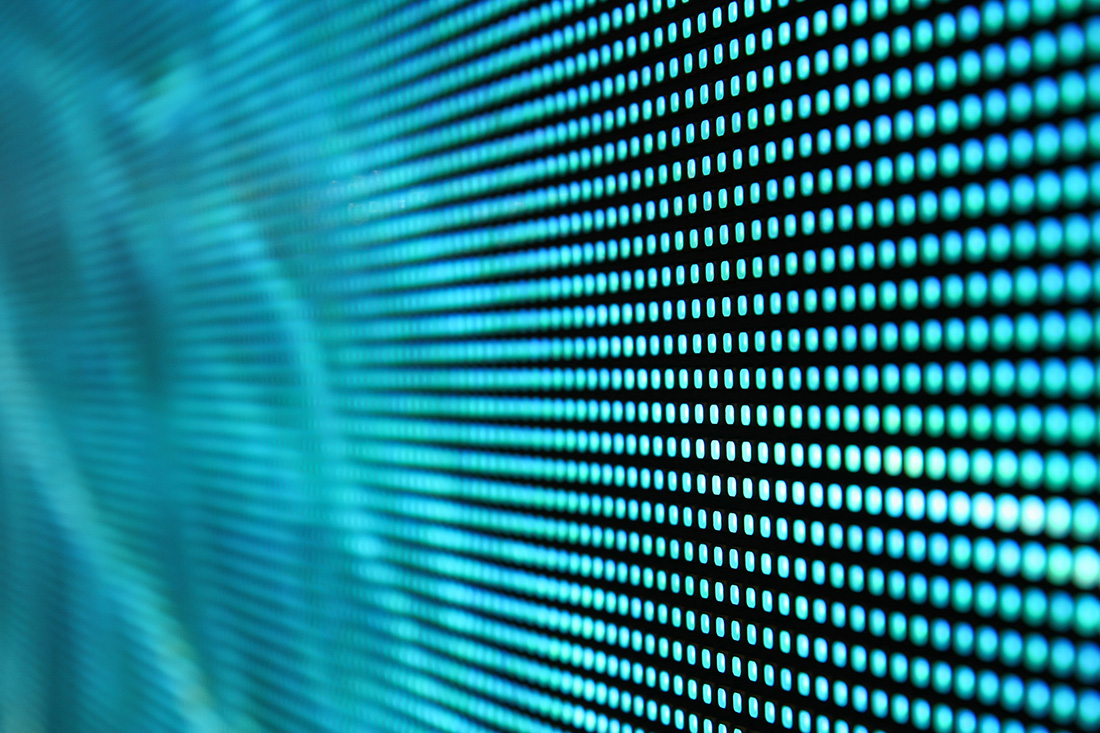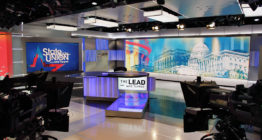Why LED video walls are replacing LCD panels as the best choice for tv studio applications

Subscribe to NCS for the latest news, project case studies and product announcements in broadcast technology, creative design and engineering delivered to your inbox.
Live TV news is more competitive than ever in 2018, and the most eye-catching piece of a studio set is often the high-tech videowalls the hosts use to showcase statistics, maps, photos and videos. They help rivet viewers attention while providing hosts with the opportunity to add variety and excitement to any broadcast. The quality, size, reliability and ease of use of these videowalls is rapidly improving, and that’s largely thanks to the evolution of LED display technologies, which are quickly supplanting the LCD format in broadcast studios around the world. The reason is that in almost every measure meaningful to a TV studio, today’s LED displays outperform LCD models.
LCD videowalls have been common for more than a decade, and they haven’t changed much. Resolution increased, brightness improved and bezels were minimized, but they’ve reached their limits. To start, a videowall doesn’t need to be comprised of 8k displays since it isn’t viewed up close, and even bezel-less panels create clear, grid-like breaks in the displayed content. All the resolution in the world can’t trick people into not noticing an obvious break in the picture. LCD videowalls also require sophisticated content management systems to display a single piece of content across multiple screens, adding complexity and increasing the need for production time and maintenance while raising the chance of failure.
LED videowalls, on the other hand, stand on the cutting edge of large format display technology. Where LCD videowalls just look like a bunch of TVs in a grid, large format LED displays give content creators a single, seamless digital canvas that isn’t restricted by frames or standard dimensions. Through rapid technological development and industry competition, LED display manufacturers have leapfrogged their LCD counterparts and now provide better color accuracy and control, better off-axis viewing, higher contrast, faster refresh rates, higher brightness with more control, better image uniformity over the lifespan, and a lifespan of 2-3 times the average LCD display. Even if the cost is slightly higher, it’s easy to see how an LED display can outperform any other option.
Another major obstacle with LCD panels is that they are undeniably a one-size-fits-all solution. The panels roll off a production line just like any other mass-produced technology, so there is little room for creativity or differentiation. The panels all share the 16:9 ratio, come in limited sizes, have only the one rectangular shape, and are extremely difficult to use on any surface but a flat wall.
Compare that with large-format LED displays, which manufacturers can custom design and build in any size, any shape, and even any curvature to create truly unique visual experiences. Over the last several years, Advanced has outfitted several TV studios with LED videowalls that were purpose-built, conforming to the exact needs and desires of the client, including a curved 1.2mm pixel pitch display covering the entire front of a host’s desk. Now set designers can use almost any surface as a digital display, including columns.
Perhaps the only reason LED displays aren’t already in every newsroom is a concern over cost. Luckily, this concern is quickly fading as prices have fallen dramatically in the past few years while quality and resolution have improved. Most studio applications can utilize a 2.5 mm pixel pitch to create HD videowalls that appear brilliant on consumers’ home TV sets, and there are now even higher resolution options with 1.9mm, 1.2mm and .9mm pixel pitches.
With the ability to create truly unique installations, studios now have freedom to express their creativity and help programs attract more viewers with exciting visuals. As more studios replace their LCD panels with vibrant, long-lasting LED videowalls, those who do not may be left behind with their aging technologies. So the next time you’re designing a set, ask yourself, do I want the same technology we were using 20 years ago, or is it time for the latest, greatest LED videowall?
Subscribe to NCS for the latest news, project case studies and product announcements in broadcast technology, creative design and engineering delivered to your inbox.





tags
Advanced, Advanced Videowall Group, David Weatherhead, LED, LED Displays, LED walls, Video Walls
categories
Broadcast Facility Technology, Featured, Studio Technology